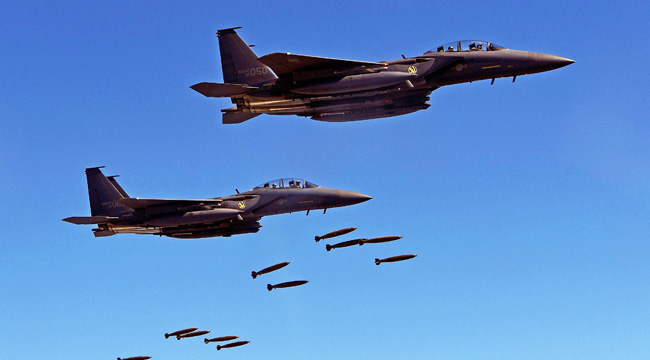
After North Korea fired a missile over Hokkaido, Japan and declared it a warm-up for a promised attack on Guam, South Korea wasted no time in demonstrating its own ample firepower. First, it conducted a drill in the Gangwon province, which borders North Korea, that consisted of dropping 15,000 pounds of bombs designed to blow apart the kind of fortifications Pyongyang leadership might hole up in. Now, it’s joined with the United States in a fly-over of the Korean peninsula and a mock surgical strike featuring U.S. and South Korea’s finest fighter jets.
North Korea, predictably, hasn’t reacted well to all this military theater on its doorstep. State media have been releasing statements describing these drills as “wild military acts of the enemies” and “rash acts” committed by “imperialist aggressor forces.” North Korea now seems more determined to lob a missile at Guam, which it views as the “advanced base of invasion” by U.S. forces.
Yet the recent shows of force are practice for the kind of military action that might be necessary if a diplomatic solution can’t be reached. If the U.S. and South Korea do feel it necessary to attack North Korea in a preemptive or retaliatory strike, that offensive would involve the same F-22s, F-35s and B-2 jets used in these recent exercises and the same kinds of missiles. North Korea might not have perfected its long-range nuclear warheads yet, but it does have a solid system of surface-to-air missiles. Stealth planes would be needed to skirt Pyongyang’s defense capabilities and strike specific military targets.
President Trump recently tweeted that he feels the time for talk is over but was contradicted by Defense Secretary General Mattis, who insists that collaboration and diplomacy are still the best route.
(Via CNN)
